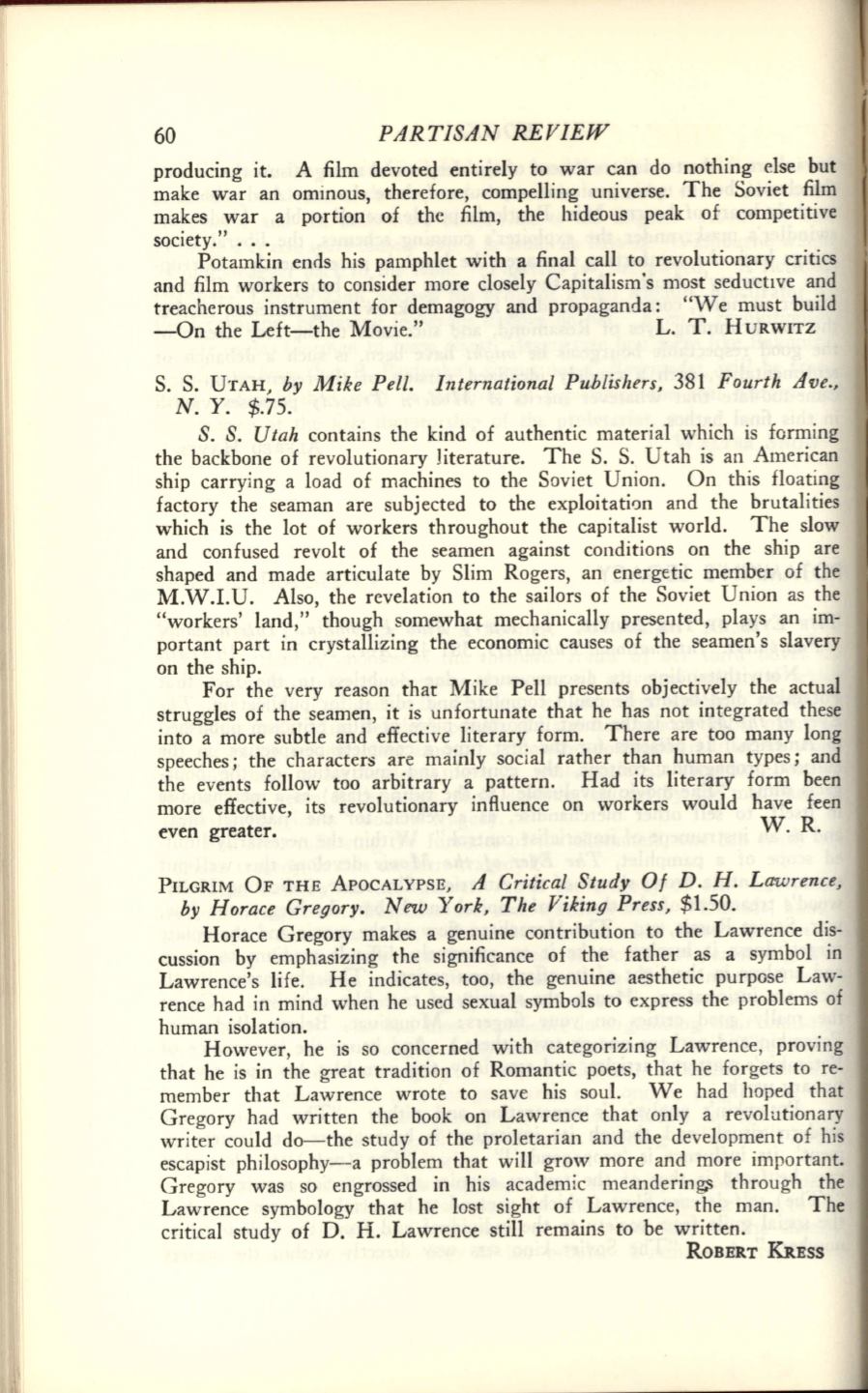
60
PARTISAN REVIEW
producing it.
A film devoted entirely to war can do nothing else but
make war an ominous, therefore, compelling universe. The Soviet film
makes war a portion of the film, the hideous peak of competitive
society." ...
Potamkin enrls his pamphlet with a final call to revolutionary critics
and film workers to consider more closely Capitalism's most seductive and
treacherous instrument for demagogy and propaganda : "We must build
-On the Left-the Movie,"
L. T. HURWITZ
S. S.
UTAH,
by Mike Pell.
International Publishers,
381
Fourth Ave.,
N. Y. $.75.
S. S.
Utah
contains the kind of authentic material which is forming
the backbone of revolutionary literature.
The S. S. Utah is an American
ship carrying a load of machines to the Soviet Union.
On this floating
factory the seaman are subjected to the exploitatirm and the brutalities
which is the lot of workers throughout the capitalist world.
The slow
and confused revolt of the seamen against conditions on the ship are
shaped and made articulate by Slim Rogers, an energetic member of the
M.W.LU.
Also, the revelation to the sailors of the Soviet Union as the
"workers'
land," though somewhat mechanically presented, plays an im-
portant part in crystallizing the economic causes of the seamen's slavery
on the ship.
For the very reason that Mike Pell presents objectively the actual
struggles of the seamen, it is unfortunate that he has not integrated these
into a more subtle and effective literary form. There are too many long
speeches; the characters are mainly social rather than human types; and
the events follow too arbitrary a pattern.
Had its literary form been
more effective, its revolutionary influence on workers would have feen
even greater.
W. R.
PILGRIM
OF
THE ApOCALYPSE,
A Critical Study Of D.
H.
Lawrence,
by Horace Gregory.
New York, The Viking Press, $1.50.
Horace Gregory makes a genuine contribution to the Lawrence dis-
cussion by emphasizing the significance of the father as a symbol in
Lawrence's life.
He indicates, too, the genuine aesthetic purpose Law-
rence had in mind when he used sexual symbols to express the problems of
human isolation.
However, he is so concerned with categorizing Lawrence, proving
that he is in the great tradition of Romantic poets, that he forgets to re-
member that Lawrence wrote to save his soul.
We had hoped that
Gregory had written the book on Lawrence that only a revolutionary
writer could do-the study of the proletarian and the development of his
escapist philosophy--a problem that will grow more and more important.
Gregory was so engrossed in his academic meandering;; through the
Lawrence symbology that he lost sight of Lawrence, the man.
The
critical study of D. H. Lawrence still remains to be written.
ROBERT KRESS


